Dreaming of 1983: A Tribute to David Bowie's Serious Moonlight Tour
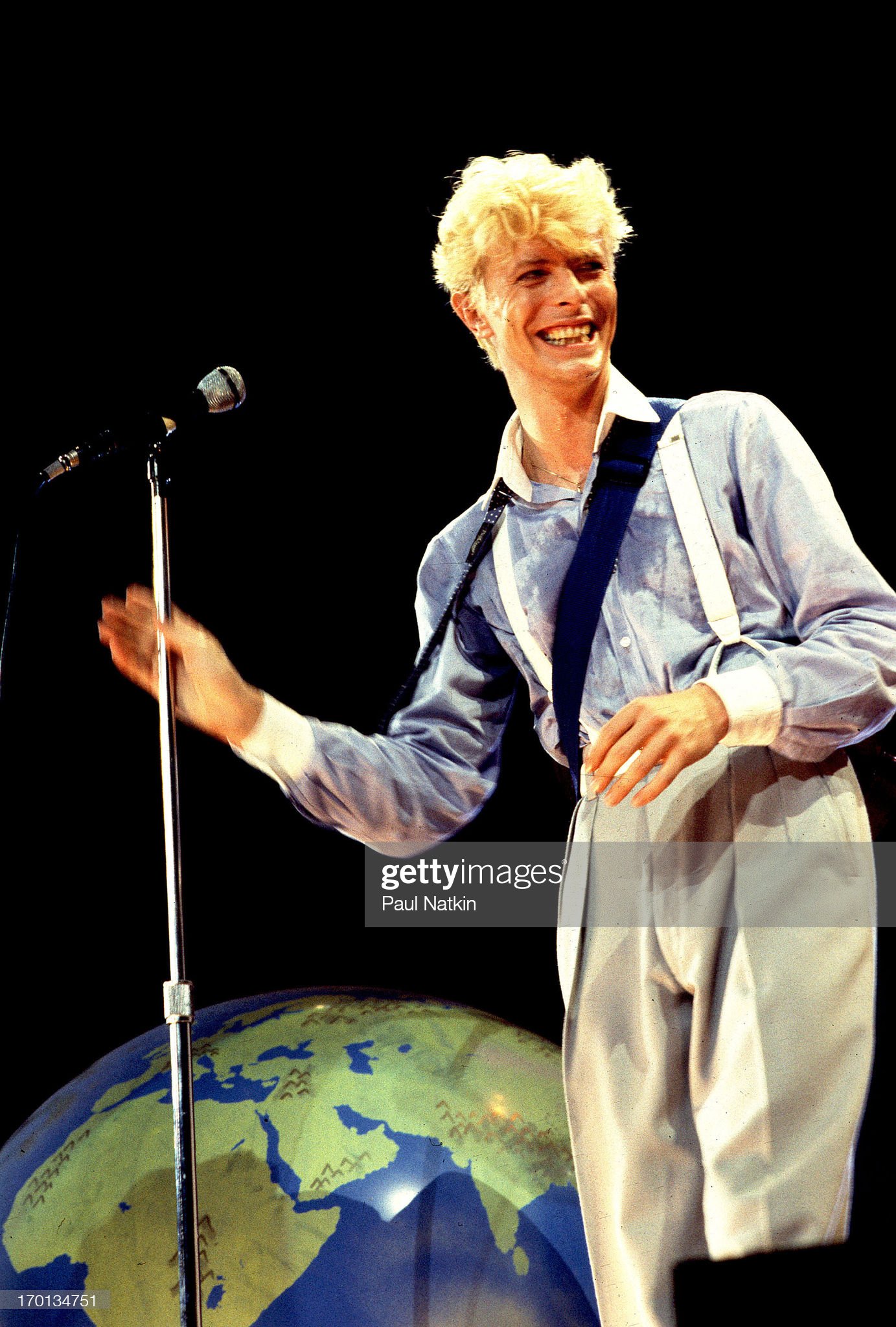
Intro: Where's the Time Machine?
I am a huge fan of David Bowie. When I got the chance to make a tribute page as a freeCodeCamp certification project, I immediately thought of David Bowie’s Serious Moonlight tour. I usually don’t like live music, but there’s something really special about this concert that wows me every time I listen to it. Unfortunately, I was born about 20 years too late to attend in person, but if I could borrow a time machine just once, I would go back to 1983 and try to buy tickets. As luck would have it, we have the next closest thing: video and audio recordings!
Now, I feel I need to give a bit of a disclaimer before we proceed.
For me to fully express my feelings about the concert, I have to discuss what I’ve experienced listening to “Recordings of Independent Origin.” They are at best a legal grey area, at worst illegal. However, there have been many instances of artists making official releases out of these recordings. Bowie himself has released two such live concert CDs: Live Santa Monica '72 and Live Nassau Coliseum '76.
For legal reasons, I must say that I do not condone nor endorse any of these recordings. I will refrain from mentioning any specifics besides concert dates and locations. My goal is not to encourage anyone to seek these out—I am merely expressing my admiration for Bowie and all of the supporting artists that made this concert amazing.
Official Video & Audio
In 2022, PBS “restored and remastered in High-Definition” the HBO special. This version is (at this point in time) available for streaming for PBS members. Color has been restored, artifacts on the right and left edges have been removed, and the harsh lighting has been toned down. “TVC15” and both encores are still missing ( five songs total), but it’s definitely a better watching experience!
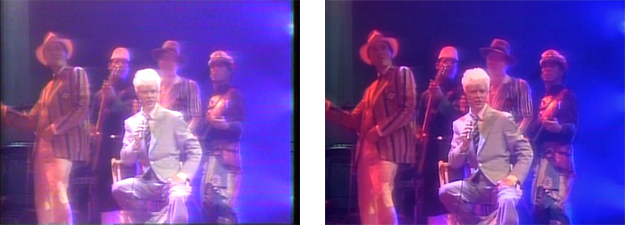
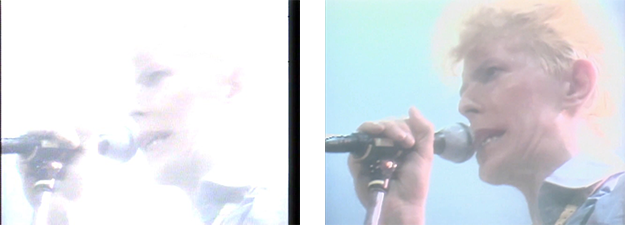
At this point, I’ve given up on there ever being a complete copy of the tour on video. That doesn’t rule out some footage existing in a vault somewhere but it’s been almost 40 years. So that brings us to audio recordings.
In 2018, we finally got an official release of the Serious Moonlight concert on CD. It's basically remastered audio from the HBO special and is also incomplete. There are four songs missing: “TVC15,” “Star,” “Stay,” and “The Jean Genie.” For some reason, they were able to include “Modern Love,” which is the final song of the night. The only way to listen to the concert in its entirety is via Recordings of Independent Origin (RoIO). Serious Moonlight is a tour worth listening to, not just because it’s Bowie, but because the setlist evolves and the performance has so much variety.
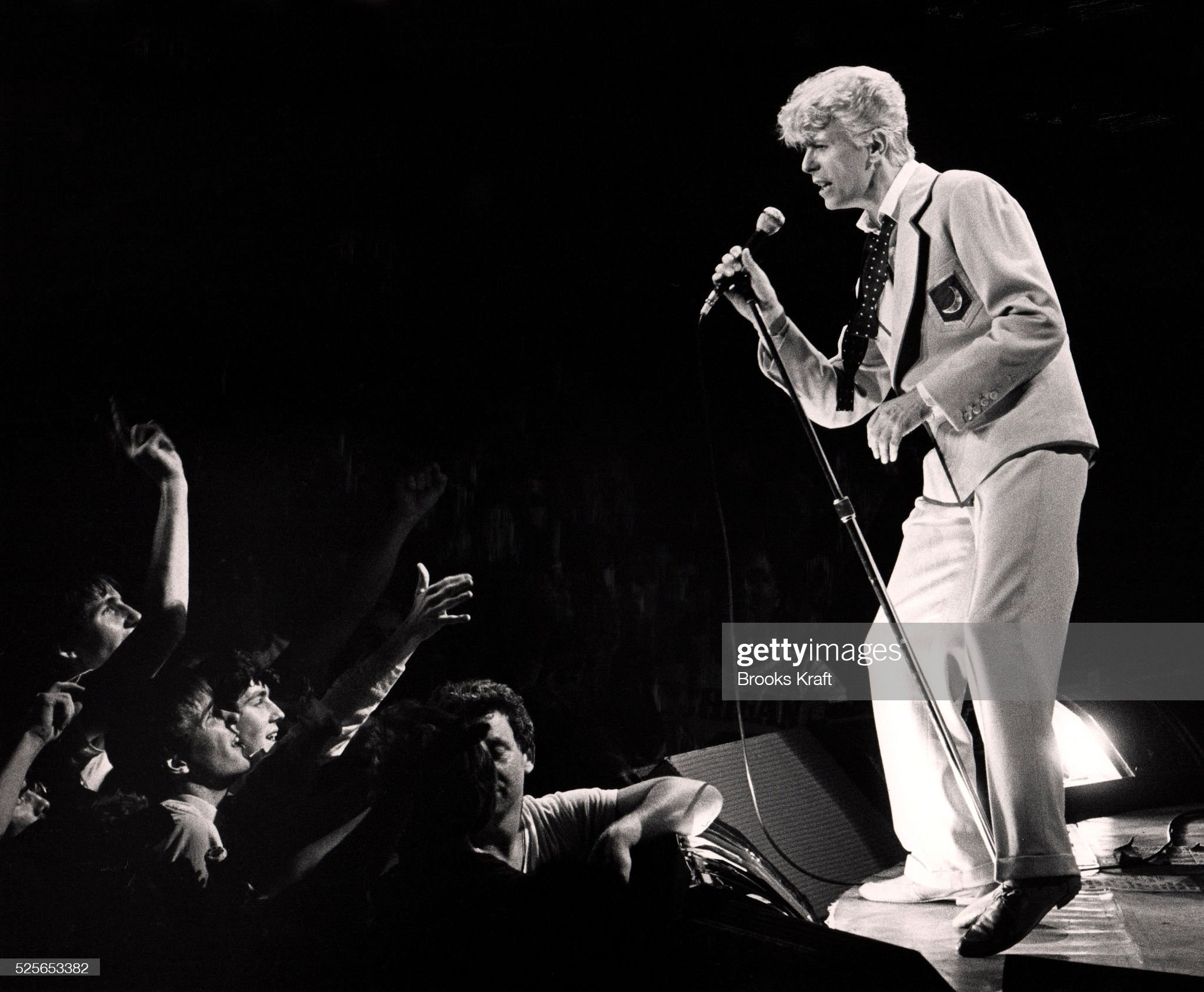
Setlist: A Love Letter to All Fans
Most concert tours are meant to promote album releases and the Serious Moonlight tour was promoting the release of Let’s Dance. One would expect most of the songs picked for the tour would be from that album, right? Wrong!
Most of the songs in the setlist are from the 1970s. It’s not like Bowie didn’t have enough material from the 1980s to pull from—he could have used more songs from Scary Monsters or Let’s Dance. Instead, only 23% of songs in the setlist were ones Bowie released in the 1980s.
In comparison, the Glass Spider tour relies heavily on the album being promoted, Never Let Me Down. There are ten songs from that album in the setlist, followed by Scary Monsters and Let’s Dance. Glass Spider is a visual storytelling experience, and the songs Bowie has chosen represent the story he’s telling. At the same time, it’s very obvious that the Glass Spider tour is tied to his new album and the music he’s released in that decade.
Let’s Dance isn’t even the most represented album in the tour, that honor goes to Station to Station. The setlists are not static, so this only represents an overall trend. The first day of the tour (May 16, 1983 - Forest, Belgium) uses 5 out of the 6 songs on Station to Station. About halfway through the tour (September 17, 1983 – Oakland, CA) that number has dwindled down to four out of six. The last day of the tour (December 8, 1983 - Kowloon, Hong Kong) it is three out of six, with songs from Let’s Dance finally outnumbering Station to Station by one.
Overall, the setlists had a lot of Bowie’s best hits from throughout his career. Let’s Dance was Bowie’s first big commercial hit. It was released the month before the tour started, and brought in a lot of new fans. In a 1987 interview with Robert Hilburn for the L.A. Times, Bowie describes the Serious Moonlight tour as “a way of introducing myself to people who were just getting interested in my music.” He wanted to share more than just Let’s Dance through this tour, and it benefitted both new and longtime fans.
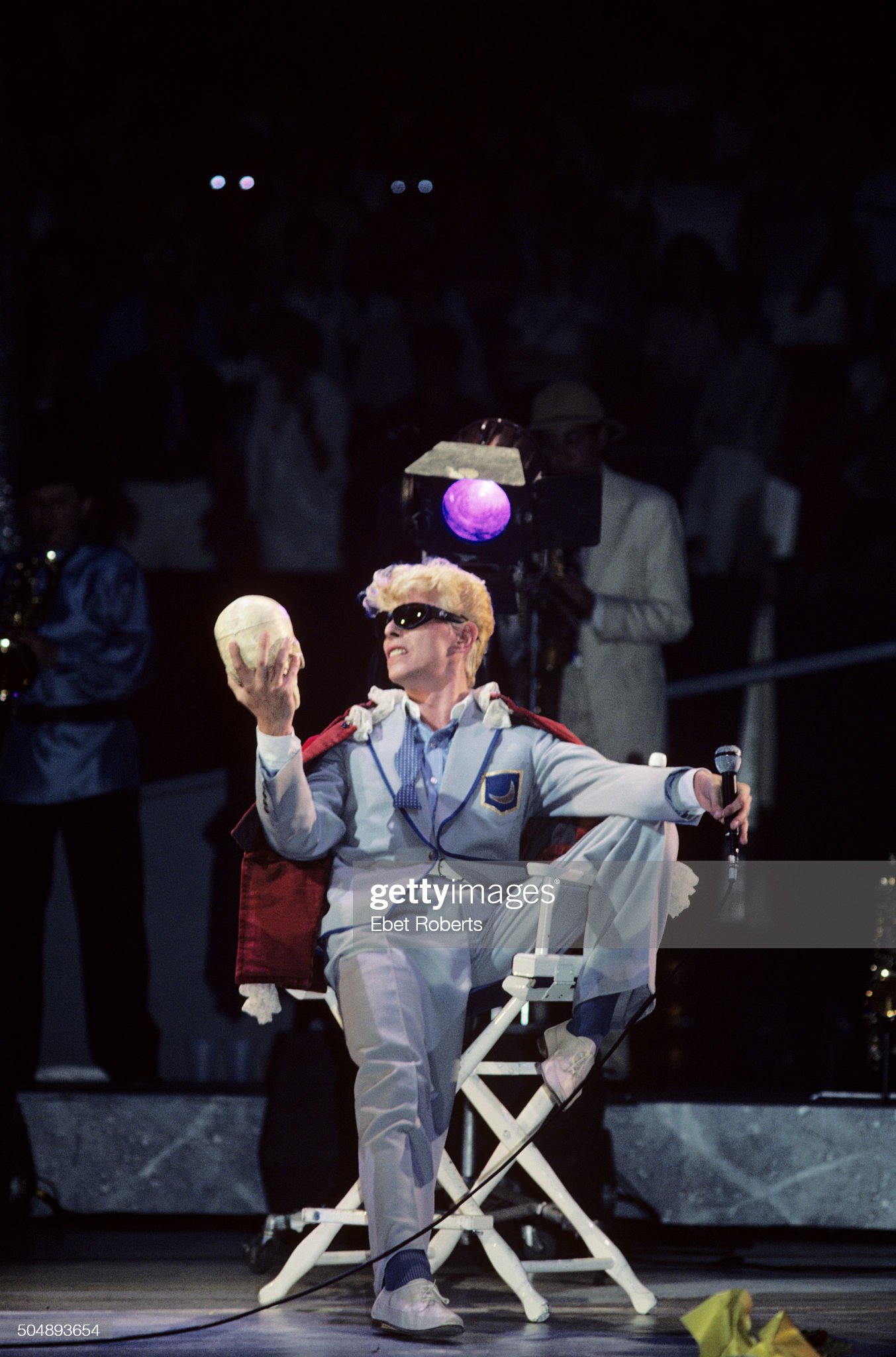
Performance: Sound and Vision
The setlist is great, but what really keeps bringing me back to Serious Moonlight is the performance. The visuals (set, choreography, etc.) are good, but if you want visual storytelling, Glass Spider blows Serious Moonlight out of the water. Serious Moonlight’s strength is in its setlist and audio performance. Now, taste is subjective—do you like saxophones and synthesizers? Because this concert has a strong sax section, it’s the 80s, and it’s what I love most about the sound! There is plenty of electric guitar in the mix, but if you were expecting Ziggy Stardust & the Spiders from Mars you may be disappointed. My favorite aspects of the performance are the occasional solo switches, Bowie’s vocals, the chemistry he has with his band, and the audience interactions.
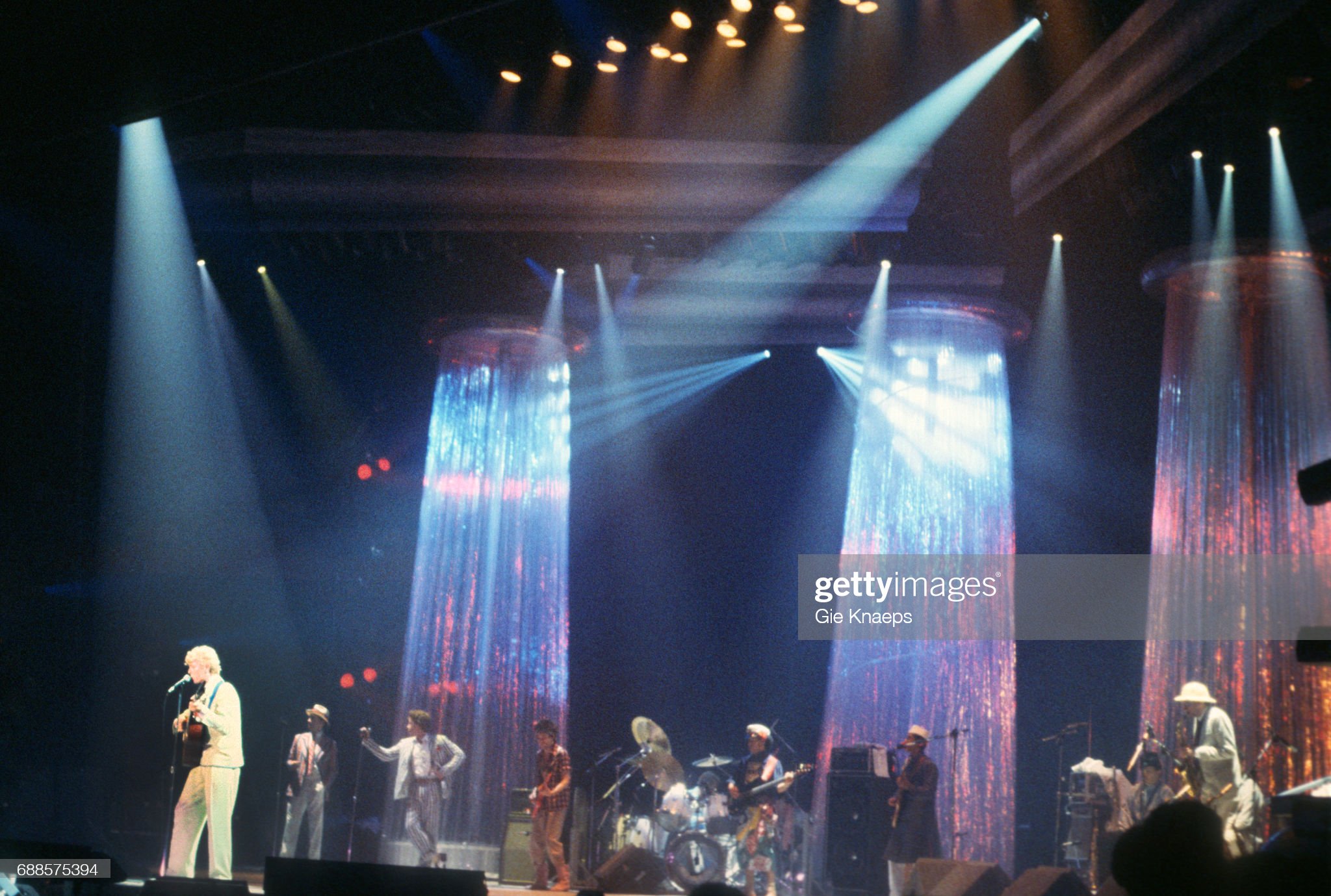
Different Day, Different Sound
Serious Moonlight’s musical performance is chaos theory incarnate. With a total of 96 performances, there was no way to perfectly replicate it every single time. The most noticeable differences between performances are Bowie’s vocals and the instrumental solo switches. These variations make it worth listening to different days of the concert. (EMI, Bowie’s estate—please, please officially release at least one good RoIO! I’m begging you!)
Bowie’s vocal performance is consistent, strong, and emotional. He seems to have a habit of randomly skipping or mixing up verses. It doesn’t hurt the performance; just gives it some variety when it does happen. During a very energetic performance on July 26, 1983 (Madison Square Garden, NYC), Bowie even ad-libbed some lyrics for “Heroes” (“damn it, just for one day!”) and “Modern Love.” Bowie is only one piece of the chaos, however.
Song solos are sometimes switched between Lenny Pickett (sax) and Earl Slick (guitar). This is most noticeable with the song “Breaking Glass.” If you watch the HBO/PBS special, you’ll be listening to the sax solo variety. Both solo versions are really good, and it makes for a nice twist compared to its album release. Please refer to the below table for some example performance dates.
| Sax Solo | Guitar Solo |
|---|---|
| July 25, 1983 (NYC) | May 20, 1983 (Frankfurt) |
| August 14, 1983 (Forum Inglewood) | July 13, 1983 (Montreal Forum) |
I don’t know why they decided to switch the solos up every now and again. But it really enhances the aural experience and I greatly appreciate it.
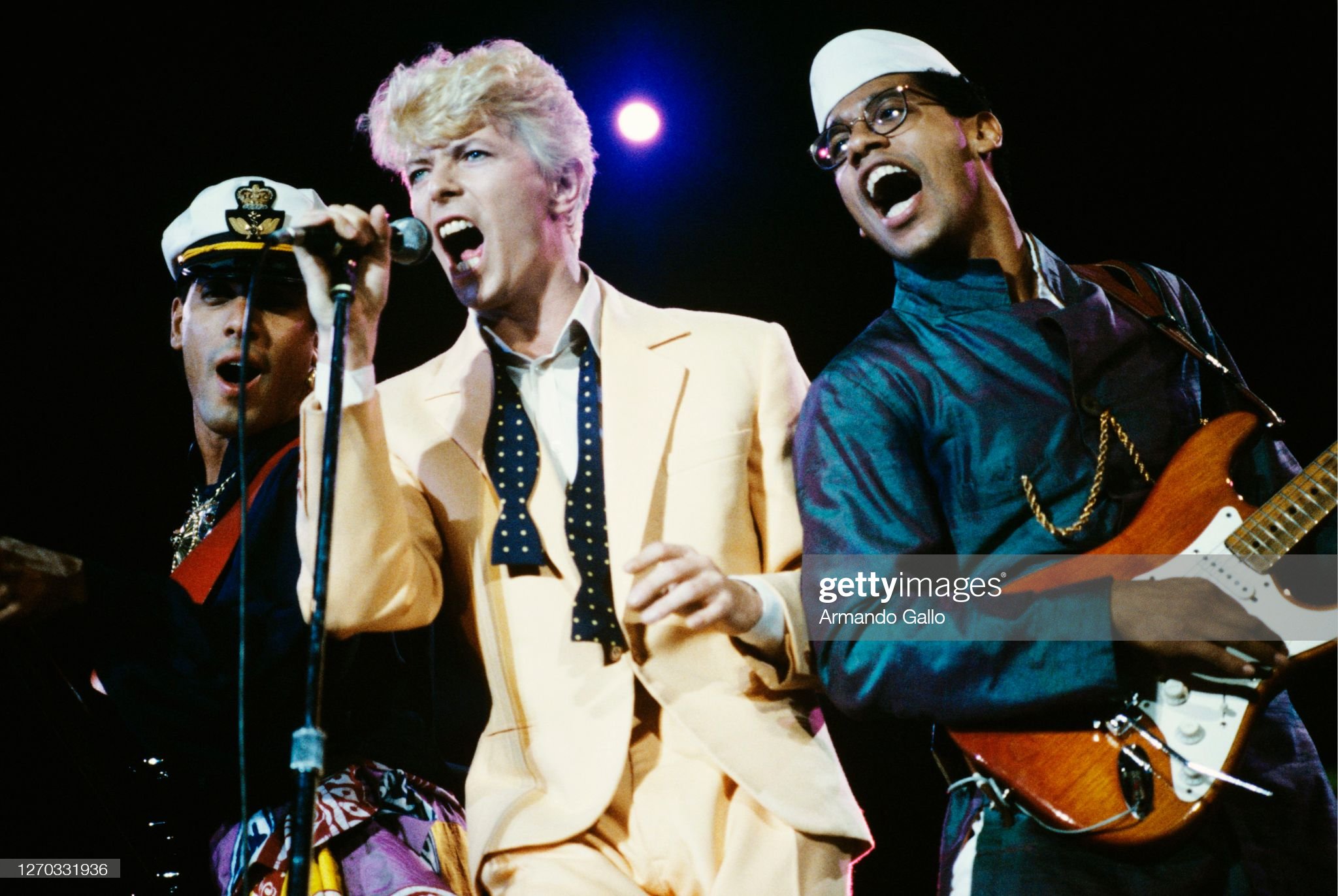
Bowie & the Band
One of Bowie’s most common nicknames was “the chameleon.” He’s always reinventing himself or changing personas, somehow ahead of the trends, but never blending in with the crowd. During the Serious Moonlight tour, he seems to temporarily shed this ephemeral quality—he is instead charismatic, relatable, and approachable. He is up on stage having the time of his life, and so is the rest of the band. Whether you’re watching the HBO/PBS special or listening to the CD, you can tell they all have great chemistry together.
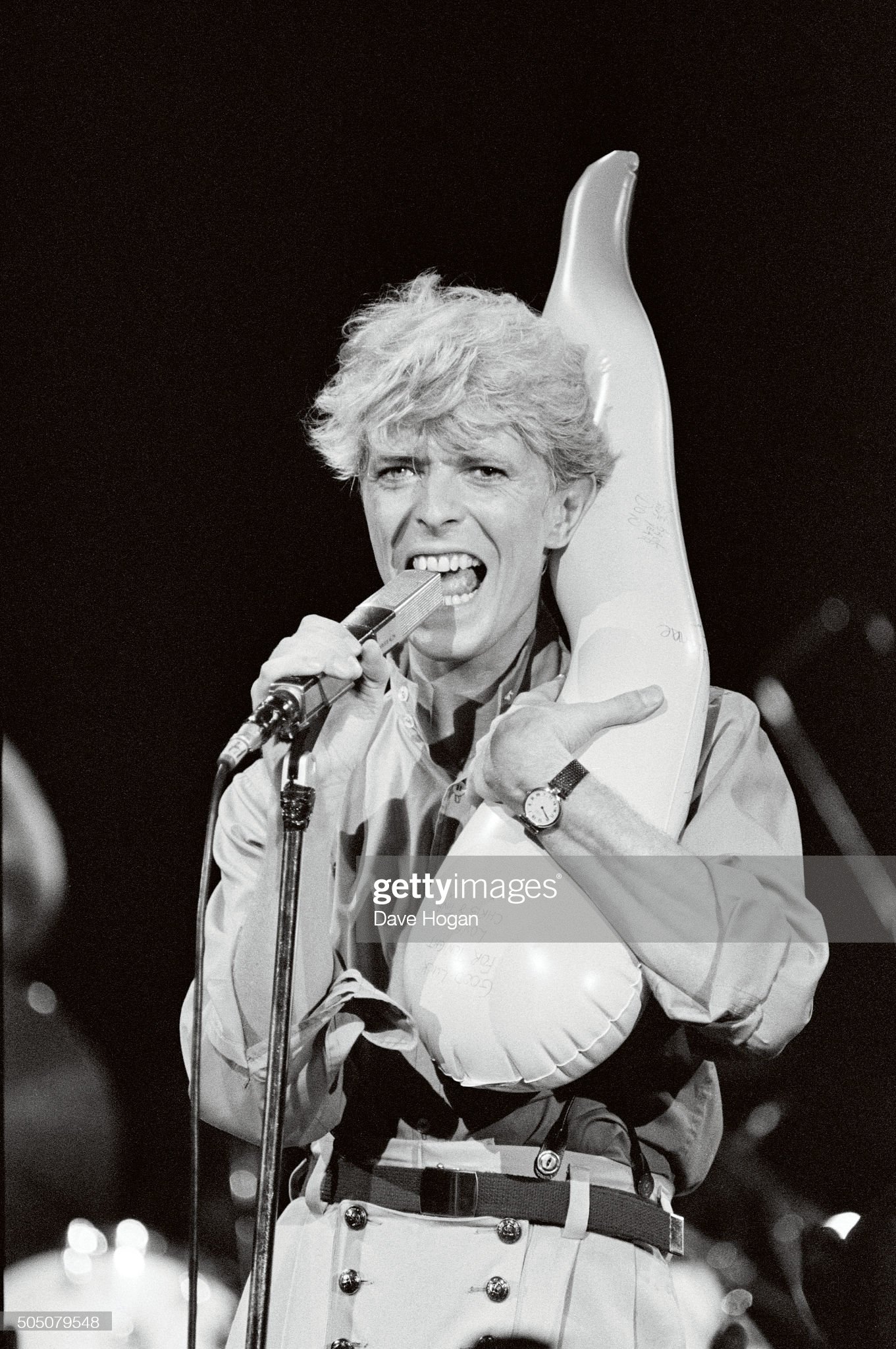
Memorable Moments
Unfortunately, one can only experience these moments through RoIO, through photos, or anecdotes from people who attended. I’ve provided dates and concert locations but won’t link to my sources. Anyways, here are some interesting moments I wish we could enjoy through official means:
- The Inflatable Leg (June 30, 1983 – Hammersmith Odeon): Someone in the audience threw an inflatable leg onto the stage. If you look at the above picture, you can see some signatures from fans and a good luck message (you might have to zoom in). Apparently, Bowie used it as a mock guitar and saxophone during the concert.
- Hysterical Fan Breaks Bowie’s Acoustic Guitar (July 20, 1983 – Philadelphia): A female fan rushed the stage after “Space Oddity” trying to reach Bowie. She ended up putting her fist through his acoustic guitar! Bowie exclaims, “Look at what you’ve done to my guitar!” The audience starts booing. At this point, I think Bowie decided it was best to play the incident down to bring the mood back up. He makes a joke out of it and says, “I apologize for my mother, she’s always doing that. Broke my guitar, man!” After a pause he says, “I don’t care.” Another pause as the audience cheers and sounding disappointed he says, “I’d like to introduce you to my band, anyways.”
- The “Gigglefit” During Band Introduction (June 24, 1983 – Offenbach): As Bowie is introducing Carlos, he almost calls him “Carmine” instead. He is laughing so hard that he is unable to continue. Carlos has to give the rest of introductions in his stead. David comes back and says, “And I think I’m David Bowie.”
Conclusion
Serious Moonlight is an amazing tour, and personally my favorite Bowie “time machine.” I think sometime after Bowie’s passing, I realized the finality of it all. That there was no more time with him. I’ve never met him, let alone shared the same space with him, but that realization still really hurt. The fact that I can experience previous concerts, through either audio or video, is very special to me. Every day, every performance, there’s a different experience. Serious Moonlight in particular was Bowie sharing his best songs (of the time) with us. And those songs share his feelings, his experiences, and even the fictional stories he wanted to tell. There’s a bit of him in each song. Small moments throughout the tour reveal another side to Bowie—it wasn’t Ziggy Stardust or Aladdin Sane or Halloween Jack or the Thin White Duke. It was just David. A highly charismatic, humorous, and endearing person. As fans, there’s something that draws us to David Bowie. There is a sense of familiarity; it is so easy to connect and relate to him and his music. The Serious Moonlight tour provides an unreal connection to David Bowie, whether you watch it or listen to it. And I still haven’t had the heart to listen to Blackstar.
Credits
David Bowie (vocals, guitar, saxophone) | Earl Slick (guitar)
Carlos Alomar (guitar) | Carmine Rojas (bass guitar)
Tony Thompson (drums, percussion) | Dave Lebolt (keyboards, synthesizers)
Lenny Pickett (saxophones, woodwinds) | Steve Elson (saxophones)
Stan Harrison (saxophones, woodwinds) | George & Frank Simms (backing vocals)